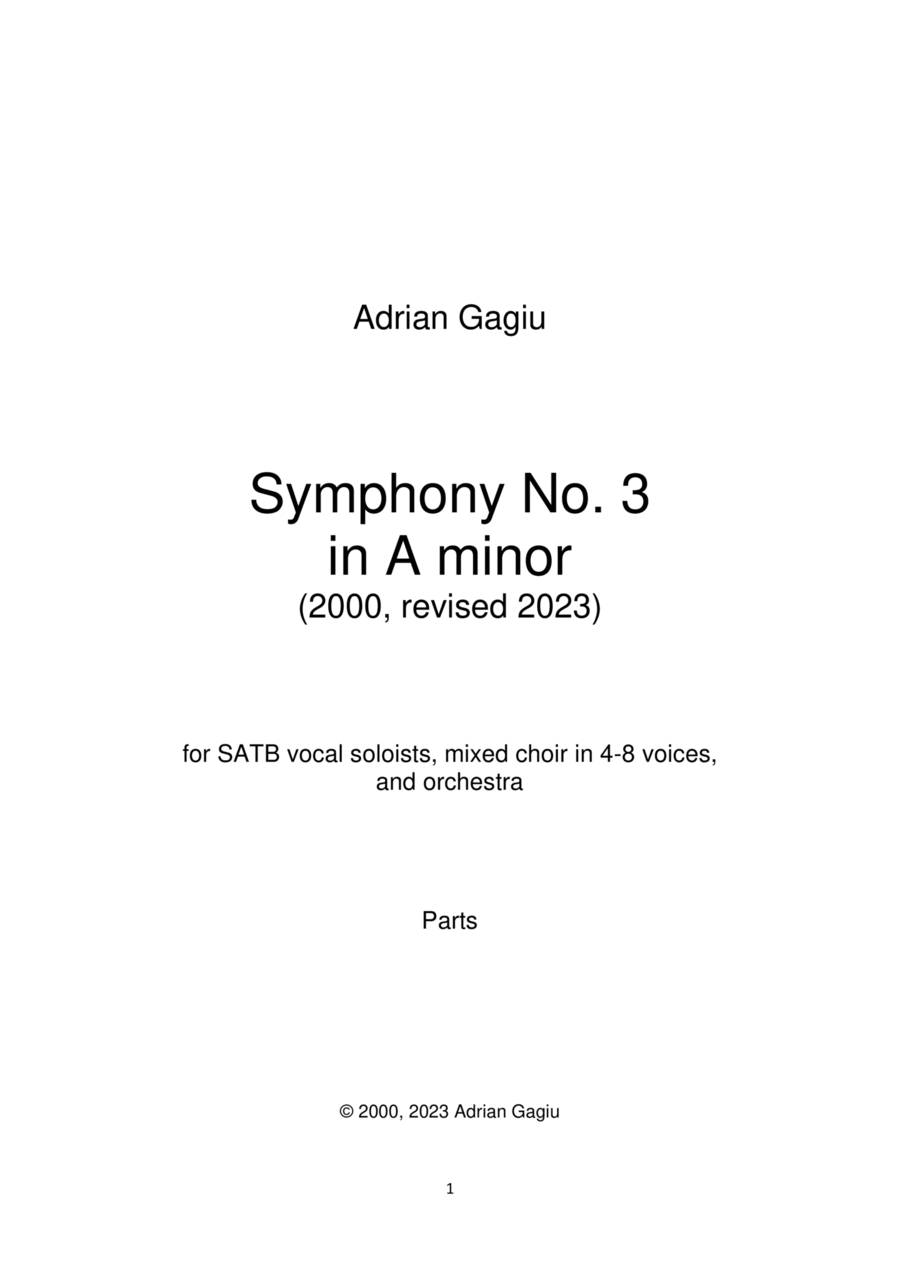Full Orchestra - Level 5 - Digital Download SKU: A0.1357497 Composed by Adrian Gagiu. 20th Century,Classical,Contemporary. 291 pages. Adrian Gagiu #942043. Published by Adrian Gagiu (A0.1357497). The orchestral parts of the Third Symphony (2000, revised 2023), an ambitious, modernist/neoclassical composition for orchestra and chorus with four vocal soloists. It may represent a search for harmony within and/or without and is a huge, subtle variations form on a theme that appears clearly and in full only in the Finale.The chromatic, first movement (Andante maestoso) begins mysteriously with A's in the unaccompanied violins, like a tuning or a seed of what is to come. These A's are adorned with oscillations which gradually become wider leaps until they reach the fifth (as in the beginning of the future full theme), and the other instruments join gradually. The mood is dark, tragic, pensive, and somehow abstract, as the music wanders in an almost improvisatory manner through chromatic modes and goes crescendo-decrescendo back again to the bare, cryptic A's.The energetic second movement (Allegro) is an enormous scherzo toying with the second melodic cell of the full theme, a descending tetrachord. This vital, Dionysian frenzy (in strong contrast to the Apollonian, severe contemplation in the first movement) leads only to its exhaustion and to the disorientated, slow Trio: first, an almost atonal tenor monologue accompanied by harp (on verses from Dante's Purgatory), then a quotation from Beethoven's sketches for a planned overture on the B-A-C-H motif, followed by a fugal section on the same archetypal motif and again a tenor monologue (on verses from Eminescu's Satire No. 4), this time with organ accompaniment and more and more tortured until the choral exclamations and the final cymbal clash. The search seemed in vain, so the rhythmic fury of the scherzo returns, but in mirror, as minor modes replaced the major ones on the same material.The Finale (Larghetto-Allegro-Larghetto) was inspired by the last scene in Goethe's Faust, part 2. After a cryptic variation for choir a cappella, the full theme appears at last in the orchestra, setting a lyric, appeased mood and more diatonic harmonies, while it reconciles the introspection of the first movement and the emotional and vital aspects of the second, although occasional attempts are made to escape, striving more and more towards the ending (with four vocal soloists and chorus). The parenthetic structure of the finale is a holographic reflection of the general form of the whole symphony, alternating gentle, contemplative episodes with exuberant or majestic fugatos. Towards the ending, ecstatic, big, complex quartal chords suggest the limits of perception and language (on the final stanzas from Dante's Paradise), until the sonority becomes again more and more rarefied and the journey returns to its starting point from the first movement: the 'tuning' A's in the violins.Total duration: 54 min. Performing Rights Organization: SOCAN. The mp3 audio clip is the second movement.
